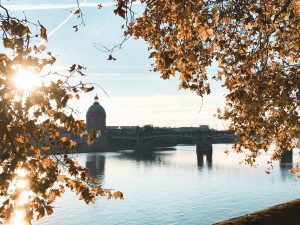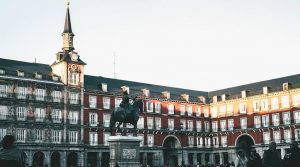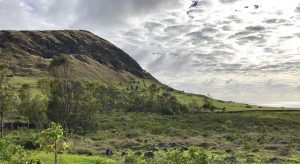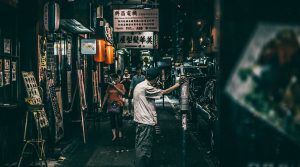Written From… An insufferably hot room in the wet tropics of Queensland, Australia
The square adjacent to the Alausí train station – a major tourism transport link in the small Andean town south of Riobamba – was abuzz with the sound of medical students harking at the local population to gather around a small colony of gazebos.
The students of the Universidad Central del Ecuador had set out on an initiative to tackle the obesity epidemic – increasingly prevalent in the country – with various infographics, equipment for medical assessments and record-keeping at the ready.
The recipients of their calls were the dispersed clusters of visitors wandering outside the station entrance, waiting to board La Nariz del Diablo [The Devil’s Nose] – a sharp, peaking mountain with treacherous rocky slopes, which during construction claimed about 2000 lives – train tour .
The surrounding local population – largely of indigenous descent and, in the immediate surroundings of the train station and square, engaged in merchant trade accommodating to the herds of visitors – were for the most part uninterested and apathetic. Meanwhile, the visitors flocked to the educational display and playfully engaged in the medical assessments as a means of killing time.

Satisfied and appeased, no longer suspended in boredom – though for the most part disinterested and apathetic – the visitors departed to the Nariz del Diablo tour train. Once on board, we began the incredible and winding descent of the Nariz del Diablo through greenery interspersed with amber hues on the jagged landscape and past the narrow gorge of the Chanchan river.
From a certain vantage point, before the track switchback, midway through the descent, the dusty red corrugated roof of the Sibambe station – the stop-off destination of the tour – appears for the first time. A high-pitched, enthusiastic voice informed us that at Sibambe we would meet a Puruhua indigenous commune, where members of the commune would perform a dance display in traditional colonial dress.
We would also be able to take pictures with a member of the commune who rents a llama, purchase memories from the small market and visit a small museum housing pre-colonial displays.

The connective tissue, as I weaved in dispersed thoughts throughout the journey, of the sequences described above is twofold. The first element is the engagement on the part of the visitor. The other is a question on the existential self-definition of the local tourist merchant.
Of the engagement on the part of the visitor, my thoughts turned to the motivation of the visitor. The development of tourism under hyper-capitalism has engendered the gluttonous consumption of experiences. One’s motivation as intentional engagement with places and cultures is replaced by the cold purchase of a commodity in exchange for mindless consumption of such places and cultures.
Like a memory to add to a trophy cabinet on display for all to approval. Places are visited and pictured; cultures are consumed, neither is reflected upon – perhaps this explains the rise of the Instagram Traveller.
A short distance away from this is apathy and disinterest, not least during the gap between experiences. A gluttonous mind is a one-track mind, and when the obstacle is time, it gets killed by mindless participation in immediate surroundings.
There’s little room for exploration, learning and knowledge. There little consideration of the fact that two thirds of the Ecuadorian population are obese or that the history and heritage of Ecuador’s indigenous population – the majority ethnic group of Alausí – is fraught with perils, inequity and is connected to the wider history of the region and the geopolitcal history of the world (which appears to be largely absent from western mainstream consciousness).
In turn, when in the full force of experiential consumption, little to no attention is given to how tourism affects the region and its peoples. In Sibambe, the encounter with the indigenous commune is nothing more than a photo opportunity – a trophy of experience.

There is no cogitation or will to know more of the peoples; that the man in the commune who is highly regarded by the visitors because he can speak english is in fact a victim of Trumpian vilification and deportation – leaving behind a son in the US.
Or that the man who rents the llama makes only $100 dollars a week – well below the minimum wage, which reflects unequal economic distributions relative both to rural regions and indigenous populations – and works 1 week of the month as part of a rotating group that travel great lengths to be no more than photo ops and dancing show puppets under the guise of cultural insight, for the satisfaction of the visitor and for the perpetuation of tourism.
This question of the existential self-definition of the tourist merchant follows from the above. In the case of the aforementioned deported man, he had no other choice than to play a typecast role defined and created against the backdrop of the insatiable tourist industry.
The merchants in the immediate surroundings of the square beside the Alausí train station enact their role against the same backdrop. Ultimately, defined by the gluttonous industry and catering to it – merchants and displays both a construct of tourism rather than an affirmation of authenticity.
There are a couple of things to note: The gluttonous consumption of culture and the seemingly preordained existential self-definition of the tourist merchant are not isolated in the sequences described above. At the extreme lie the partying coasts of Spain and Greece. Nor are they universal. Rather, both are part of a trend that is increasingly apparent in the unfolding of the tourism industry.

Tourism creates jobs and allows one to glimpse into cultures and yet, increasingly, it somehow fails to engender a consideration of its negative effects. On the part of the visitor, as I was – and still am, now in Australia – I ask, how does one embark on tourism and travel without the mindless consumption of experiences? How does one intentionally engage, learn and adventure? These are the question one must ask when endeavouring to travel and delve into new cultures.
As for the tourism industry, perhaps it ought to take a look at the civil rights tourism campaign of the US‘ southern states. It engenders intentional engagement and possibly meaningful roles for tourist merchants as part of a wider programme of truth-telling.






